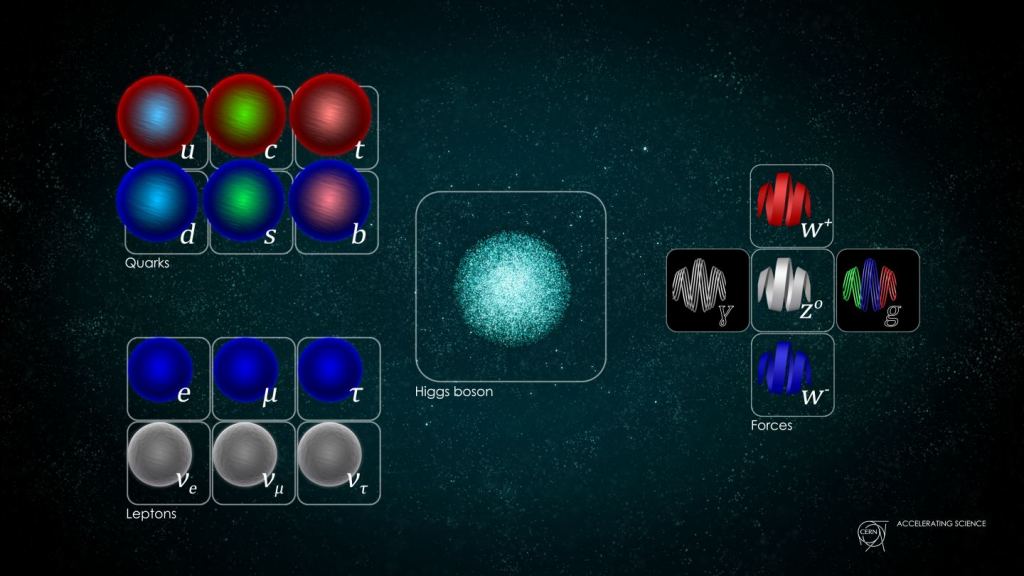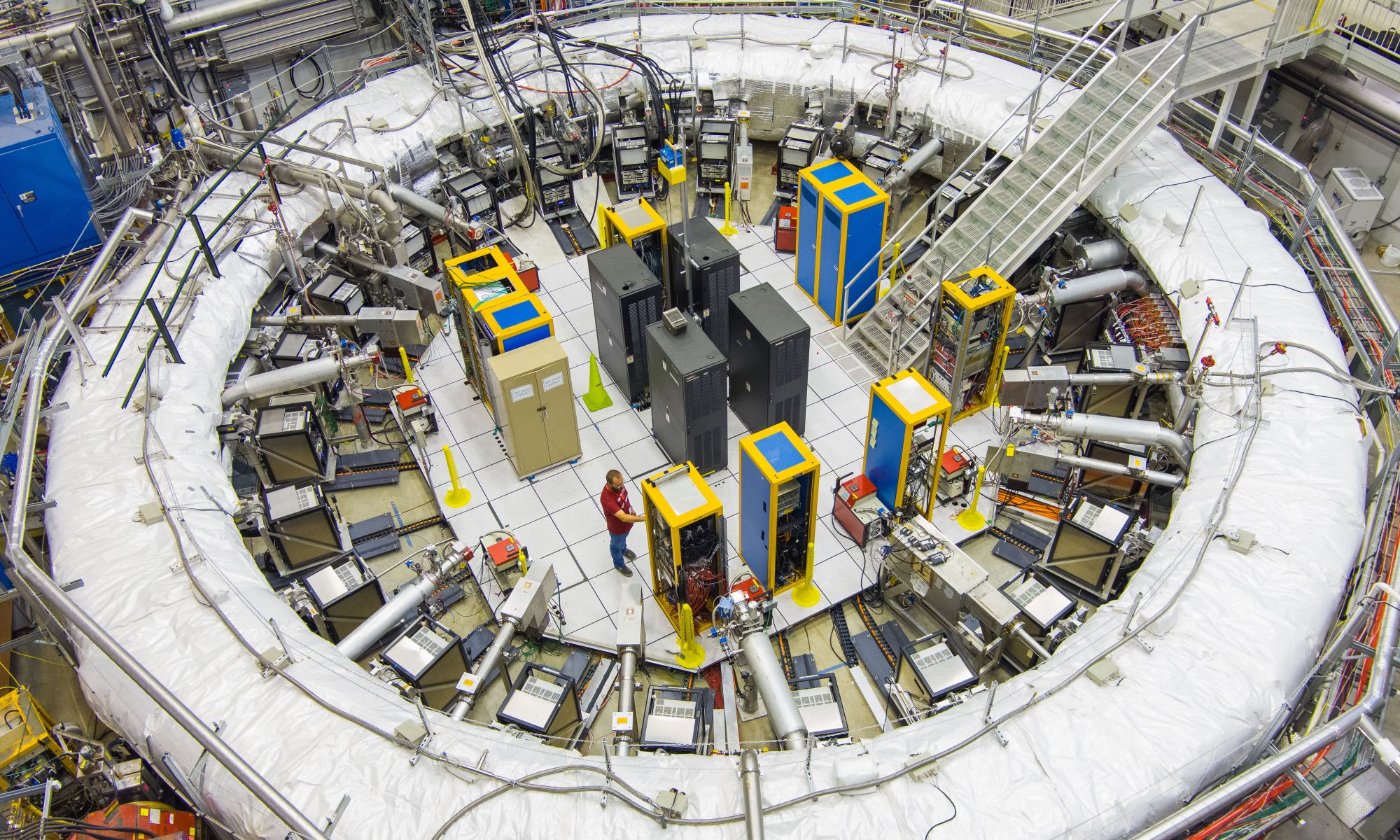At the Fermi National Accelerator Laboratory (aka. Fermilab), an international team of scientists is conducting some of the most sensitive tests of the Standard Model of Particle Physics. The experiment, known as Muon g-2, measures the anomalous magnetic dipole moment of muons, a fundamental particle that is negatively charged (like electrons) but over 200 times as massive. In a recent breakthrough, scientists at Fermilab made the world’s most precise measurement of the muon’s anomalous magnetic moment, improving the precision of their previous measurements by a factor of 2.
The results were announced on Thursday, August 10th, and were described in a scientific paper submitted by the Muon g-2 collaboration for publication. As they explained, the new result is based on data obtained during the first three years of the experiment, which recorded an anomalous magnetic moment (g) with a precision of 0.20 ppm. This new value bolsters the results from the first year of the experiment, announced in April 2021, and resolves a discrepancy between theory and experimental results that was first noticed over 20 years ago.
To break it down, physicists use the Standard Model to explain how the Universe behaves at the most fundamental level (the quantum realm). According to this model, all matter is composed of elementary particles that fall into two categories: fermions and bosons. Whereas bosons fall into two subsets, gauge (force carriers) and scalar bosons, fermions are broken down into quarks and leptons, divided into three “generations.” Muons fall into the second generation of leptons, called “neutrinos, and reside between electron and tau neutrinos.

Like electrons, muons have a tiny electric charge (?1 e ) and a half-spin (precession) that occurs in the presence of a magnetic field. The speed of its precession depends on the strength and orientation of the magnetic field, known as the magnetic moment (g), which theory predicts should be equal to 2. Muons also interact with other subatomic particles that blink in and out of existence in the surrounding “quantum foam,” which changes how they interact with the magnetic field. The Standard Model accounts for all known particle interactions and predicts how the quantum foam changes g.
However, physicists are interested in finding more possible interactions involving particles that have not yet been discovered. This is the purpose of the Muon g-2 collaboration, which comprises 181 scientists and 40 post-doctoral students from 33 institutions in seven countries. The experiment began in 1959 at CERN and ran until 1984. This was followed by the Brookhaven National Laboratory (BNL) conducting experiments between 1997 and 2001, which offered the first hints that the behavior of muons disagreed with the Standard Model.
Between 2017 and 2022, Fermilab conducted the next phase of the experiments, which officially wrapped up on July 9th, 2023, after six years of data collection. For their measurements, the collaboration relied on a superconducting magnetic storage ring originally built for the BNL that was transferred in 2013. Over the next four years, the collaboration upgraded the instruments and adopted improved techniques and simulations for the sake of reducing the uncertainty of g-2 by a factor of four (compared to the BNL result).
The researchers then spent six years repeatedly sending a beam of muons into the 15.24-meter
(50-foot) storage ring, where they were circulated at close to the speed of light. In its first year of operation, the Fermilab experiment collected more data than all prior muon g-factor experiments combined, analyzing the motion of more than 8 billion muons. Based on the first three years of data, the Muon g-2 experiment’s results strongly agreed with the value found by the BNL research team. As per Fermilab’s announcement, the new value announced by the Muon g-2 collaboration is:
g-2 = 0.00233184110 +/- 0.00000000043 (stat.) +/- 0.00000000019 (syst.)
“In addition to being the most precise measurement to date, these results reinforce the previous results that diverge from the Standard Model. Brendan Casey, a senior scientist at Fermilab who has worked on the Muon g-2 experiment since 2008, explained the significance of their research in the official Fermilab press release. “We’re really probing new territory,” he said. “We’re determining the muon magnetic moment at a better precision than it has ever been seen before. We improved a lot of things between our first year of taking data and our second and third yet. We were constantly making the experiment better.”
With this measurement, the collaboration has achieved its goal of decreasing systematic uncertainties caused by experimental imperfections. The total systematic uncertainty also surpassed the design goal in its first three years, thanks to the sheer volume of data gathered. “This measurement is an incredible experimental achievement,” said Peter Winter, the Muon g-2 collaboration’s co-spokesperson. “Getting the systematic uncertainty down to this level is a big deal and is something we didn’t expect to achieve so soon.”
The collaboration team will spend the next few years analyzing the last three years of the experiment’s data, which they hope to complete by 2025. Once all six years of data are incorporated into their analysis, the team will make the most precise measurement of the muon magnetic moment ever. In the meantime, scientists have a new and improved measurement that will help guide future experiments that probe beyond the Standard Model. Said Fermilab scientist Chris Polly, a co-spokesperson for the current experiment, who was a lead graduate student on the Brookhaven experiment:
“After the 20 years that have passed since the Brookhaven experiment ended, it is so gratifying to finally be resolving this mystery. So far we have analyzed less than 6% of the data that the experiment will eventually collect. Although these first results are telling us that there is an intriguing difference with the Standard Model, we will learn much more in the next couple of years.”
Further Reading: Fermilab


The article could stand some more editing, the muon generation of leptons and the proposed increased tension with theory are unclear.
But perhaps context checking would be good too, Nature pointed out that improved, more theory informed, predictions of the Standard Model result has put the earlier tension in hazard*:
“Dreams of new physics fade with latest muon magnetism result …
The muon’s magnetism is still strong. Its most precise measurement yet is in line with a series of earlier results — and seals an embarrassing discrepancy with decades of theoretical calculations that had predicted a slightly weaker magnetism for the elementary particle.
But although the odd behaviour of the muon — a heavier cousin of the electron — was once seen as a possible omen of new physics, results in the past two years suggest that the theory side might not need major amendments after all.” [Dreams of new physics fade with latest muon magnetism result, Nature NEWS. 10 August 2023]
*As does the recent, also a factor 2 (IIRC) improvement in electron charge sphericity measurements and earlier LHC runs. Both suggest there is no new physics associated with the Standard Model p to TeV energies (apart from the neutrino sector of mass oscillations, which is not included yet).